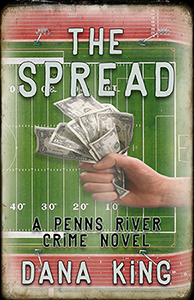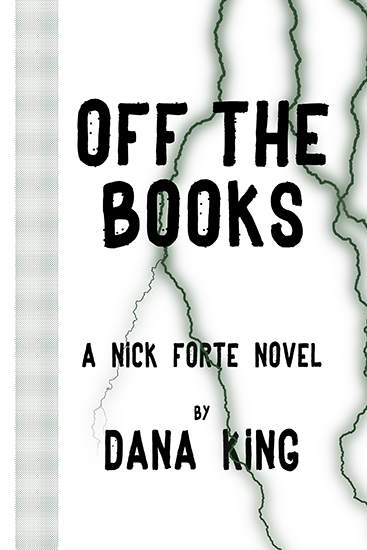Fledgling
writers—and more than a few more experienced writers—often wonder what an
editor can do for them. Do they need one? What kind of editing do they need?
What do the different terms for editing even mean? They’re legitimate questions
and more than once I wished I had good answers.
Well now I do.
Rachel Peck is the
founder of Full Spectrum Editing, as well as a companion voice-over service
called Rachel Reads. Rachel has a BS in Linguistics from Georgetown University
and her clients have included the American Pharmacists Association (APhA), National
Association of Secondary School Principals (NASSP), Science Applications
International Corporation (SAIC),
Planning Research
Corporation (PRC), Computer Sciences Corporation (CSC), Electronic Data Systems (EDS), Hewlett Packard
Enterprise (HPE), DXC Technology.
She works with her
husband, Michael Peck, who writes for The National Interest, Politico, Foreign
Policy, Forbes, Forward, Aerospace America and others.
Rachel was kind
enough to stop by today and answer questions I think will be of interest to
many writers.
One Bite at a Time: Rachel, tell us a little about Full
Spectrum Editing.
Rachel Peck: Full Spectrum Editing aims to provide
"one-stop shopping" for writers. It includes the full spectrum of
services from proofreading to copyediting to substantive editing to writing and
rewriting.
OBAAT: Let’s break that down a little for some of our readers who might be
wondering what editing assistance they might need. What’s the difference
between copyediting and substantive editing? Between substantive editing and
writing and rewriting?
RP: This can vary somewhat depending on whom you ask, but basically,
copyediting involves changes that have to do with accuracy and style and do not
involve close collaboration with the writer. Examples are spelling, grammar,
missed words, misused words, and following a style guide such as Associated
Press or Chicago. When I say there is not close collaboration with the writer,
the copyeditor does not need to check in with the writer when changing
"can" to "may" or "hone in on" to "home in
on," because one is correct and one is incorrect. Likewise, a style guide
dictates whether or not to use serial commas and when to hyphenate words.
Substantive
editing, often called content editing, involves changes to wording and
organization and is done in close collaboration with the writer. Examples
include eliminating wordiness, moving sentences and paragraphs around for more
logical flow, that kind of thing. Or, the editor may just note problems he or
she sees with suggestions for fixing them.
That said, the
copyediting and substantive editing can overlap depending on the particular
situation. A writer might give a copyeditor latitude to fix wordiness, or to
suggest organizational changes, for instance. With Track Changes and other
mark-up features and the paradigm shifts occurring in the writing and
publishing world, roles and expectations are changing, too.
And substantive
editing can and does overlap with rewriting. One way in which I would say they
differ, which may be subtle, is, for example, changing the type of writing. For
instance, a marketing company might want a press release turned into an article
suitable for shopping out to various publications. The article would be written
in a very different way with a different slant, possibly for a different
audience.
Writing involves
taking an idea or concept with some direction as to tone, audience, and so
forth, and creating an original piece.
OBAAT: What do you find the most challenging thing about working as an
editor?
RP: Arriving at a mutual understanding with the writer as to exactly what
level of editing he or she wants (or helping him/her figure that out; often
writers are not aware of all their options) and not going beyond one's remit.
Ultimately the writer, not the editor, owns the written piece. The editor's job
is to help the writer express his/her vision clearly, correctly, and readably.
Again, the writer and editor must agree up front on what the writer expects and
the latitude given to the editor.
OBAAT: I’m happy to hear you say that. I’ve never worked with an editor at
the developmental phase of a book and fledgling writers sometimes come to me
asking if they need an editor. To me, if they’re asking, there’s a good chance
they do, but too many I see go seeking an editor hat in hand, half afraid to
stand up for their vision of their own book. I always ask them two things:
whose name will be on the cover? And who’s paying who? Or whom? (I can use an
editor myself here.) How much back and forth is there when you work with a
writer who has a distinctive style or voice?
RP: The amount of back and forth will depend a lot on what stage the
written piece is at and what he/she wants me to do. In general, there should be
enough back and forth that the writer is aware of the editor's direction and
further communication can take place. This will be the case regardless of
distinctive style or voice.
To me the important
question when a writer has a distinctive style or voice is: How does an editor
give suggestions for improvement without interfering with the writer's voice?
By being as vague
as possible. (Wait, what?!?) Instead of telling the writer what to do or how to
do it, I prefer to ask questions and make comments for the writer to respond
to. To point out something that left me confused or wanting more information. It
is up to the writer decide how (or if) he/she will change the manuscript. Of
course, the writer certainly can ask for suggestions and an editor should be
prepared to give them.
Examples could
include:
What is the
character thinking or feeling at this moment? (There are quite a few ways the
writer can fix this.)
This
chapter/page/paragraph interrupts the flow of a tense part of the piece. Could
this same information go elsewhere? (The writer might decide to move or
delete.)
The couple is on
their way to meet his parents for the first time, but I need a little
backstory. How long have they been dating/together, what has he told her about
them, how is she feeling about the impending meeting, etc.
I'm not sure how
this interlude relates to the text before and after it, or how it adds to the
story. I need more information. (Writer may decide to delete, give backstory,
add more information, here or earlier.)
Hero's action and
described mental state don't seem to match.
This character
doesn't seem to have much impact on the plot. How would the story be different
without him/her? (Writer may decide to flesh out character more or remove
character.)
You want to help
put the writer in the reader's shoes. The writer knows everything about his
characters, their motivations and plans, making it easy to leave out or
confusingly place information the reader needs or that will enhance the
reader's experience. Often, a reader may feel lost, irritated, unconvinced,
bored, etc. The editor can help the writer spot and resolve potential reader
problems.
OBAAT: What should an author keep in mind before coming to you that will
allow you to provide the most benefit?
RP: Determine what it is you want the editor to do. Know your weak points.
What would bring the most benefit to your written piece? What stage is your
writing at? If it is at an early stage, perhaps a first draft, you might
benefit most from a substantive edit. If the writing is past that stage and you
are happy with organization, flow, and wording, you would probably benefit most
from a copy edit.
OBAAT: You also have a voice-over service, Rachel Reads. What kinds of things
are you looking for?
RP: The world of voice over narration covers a lot of different
things---audio books, commercials, videos, movies, distance training and
education (such as e-learning and computer-based training), interactive voice
response (IVR), and video games. There are probably more I haven't mentioned.
At this point, I'm primarily looking for short reads, which means commercial,
educational, and short stories or very young children's books, which are also
short. In the future, I hope to do full-length audio books.
OBAAT: I find many writers do themselves a disservice when reading in public
because, quite frankly, they stink at it. A public reading is a performance and
must be approached that way, though stopping well short of scenery chewing. You
have to read the words of others and make them convincing. What are some of the
things you do to prepare to record a story?
RP: Reading the story is just the beginning. I ask myself, What is the
author trying to convey with this character? How is the character described in
the story? How can my reading help to convey that? Pitch, inflection,
expression, tone, accent if appropriate. Then comes practice and more practice.
I want to be familiar enough with the text to read it smoothly, without
hesitation or mispronounced words. This is practice before recording. Next,
recording and listening to several practice runs helps me nail down the best
delivery. It's like acting, only with a reset button when you fluff your lines.






